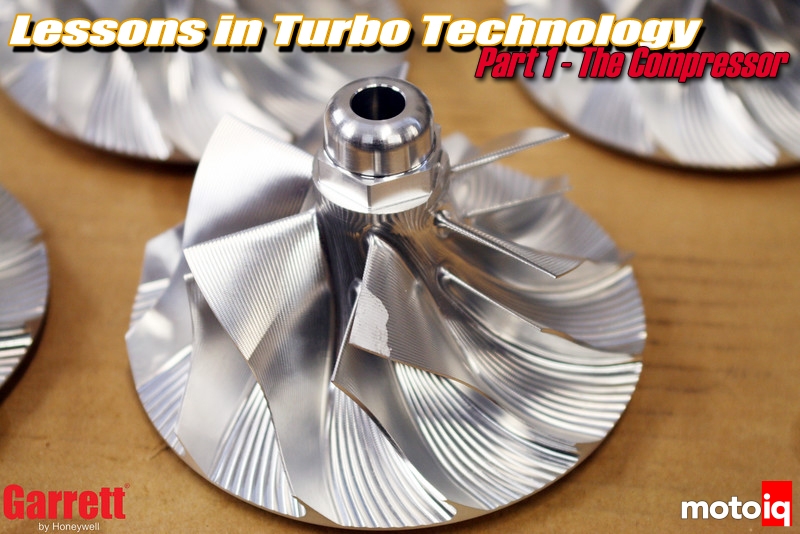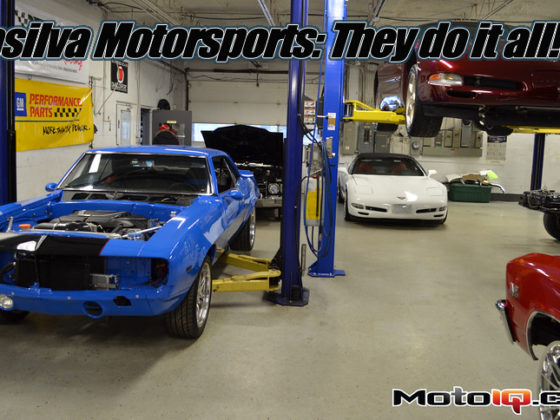
Lessons in Turbo Technology with Garrett! Lesson 1 – The Compressor Wheel
Recently we were privileged to be able to take a look behind the walls of Garrett Turbochargers' research and development facilities. We were able to get an insider view of the intensive engineering inside a Garrett Turbo and viewed first hand what differentiates it from your typical aftermarket fare. We were very impressed by what we saw and we would like to share it with you by breaking some of what a World Class OEM supplier puts into the performance turbos any consumer can buy into easily digestible lessons that we will be presenting to you periodically. Perhaps the key part of any turbo is the compressor wheel. Let's look at what Garrett does to bring you one of the best compressor wheels on the market.
Typically an aftermarket company is good at innovation, responding to the market and getting products to market quickly. Where they typically fall behind when compared to an OEM level manufacturer like Garrett is in the analytical engineering, performance and validation testing. Some aftermarket companies do not have immediate access to extensive test facilities and probably do all their testing on the track or sometimes even their customers cars!
 Garrett's GTX compressor wheel is CNC machined from billet aluminum. Billet wheels from any manufacture usually have a performance advantage over your typical cast aluminum compressor wheels but Garrett's are highly engineered pieces that can give an edge for both performance, user safety and long term durability. Let's take a look and some of the steps involved in the evolution of a Garrett GTX compressor wheel.
Garrett's GTX compressor wheel is CNC machined from billet aluminum. Billet wheels from any manufacture usually have a performance advantage over your typical cast aluminum compressor wheels but Garrett's are highly engineered pieces that can give an edge for both performance, user safety and long term durability. Let's take a look and some of the steps involved in the evolution of a Garrett GTX compressor wheel. Most billet compressor wheels on the market start out with this, a round piece of billet. This part is either extruded or roll formed into shape. The act of roll forming or extruding it causes mechanical working that refines the metal's grain (yes metal has a grain just like wood). The metal grain gets finer especially along the surface which is good because this ends up being on the outside of the compressor wheel which is pretty highly stressed. Finer grain means more tensile strength and better fatigue resistance. To make the compressor wheel, blanks are sawed out of the round billet and CNC machined into shape on a 5 axis machine. A 5 axis CNC machine has 5 degrees of freedom in movement of the cutting tool. This is critical for a complicated part with underhangs like a compressor wheel. Processing like this can make a pretty decent wheel but is it the best way?
Most billet compressor wheels on the market start out with this, a round piece of billet. This part is either extruded or roll formed into shape. The act of roll forming or extruding it causes mechanical working that refines the metal's grain (yes metal has a grain just like wood). The metal grain gets finer especially along the surface which is good because this ends up being on the outside of the compressor wheel which is pretty highly stressed. Finer grain means more tensile strength and better fatigue resistance. To make the compressor wheel, blanks are sawed out of the round billet and CNC machined into shape on a 5 axis machine. A 5 axis CNC machine has 5 degrees of freedom in movement of the cutting tool. This is critical for a complicated part with underhangs like a compressor wheel. Processing like this can make a pretty decent wheel but is it the best way? At Garrett a billet compressor wheel starts out like this, a forged near net shape blank, much like a forged racing piston. This is one of the best possible ways to make a compressor wheel. Forging is smashing a piece of aluminum into a die at extremely high pressures. The stresses caused by forging produces the maximum amount of grain refinement possible throughout the material. The grain is also oriented around the periphery of the blank and around the center which will become the hub. This also happens to be forming the grain in the direction for the wheel to best resist stress under use. Since the metal has better mechanical properties, the material superiority can be exploited in the design of the compressor wheel. The blades can be designed thinner and hubs smaller for better aerodynamic efficiency of the finished wheel without sacrificing strength. It costs a lot more to make a compressor wheel this way, a large investment must be made for the forging tooling and machinery. This is worth it though as the final product will be much stronger and fatigue resistant than a cast wheel or a billet wheel machined out of round stock. After forging the blank is machined in a 5 axis CNC machine to its final shape, just like a conventional billet wheel. Visually to the untrained eye a Garrett billet compressor wheel might look identical but improved performance starts from the very beginning. of the process.
At Garrett a billet compressor wheel starts out like this, a forged near net shape blank, much like a forged racing piston. This is one of the best possible ways to make a compressor wheel. Forging is smashing a piece of aluminum into a die at extremely high pressures. The stresses caused by forging produces the maximum amount of grain refinement possible throughout the material. The grain is also oriented around the periphery of the blank and around the center which will become the hub. This also happens to be forming the grain in the direction for the wheel to best resist stress under use. Since the metal has better mechanical properties, the material superiority can be exploited in the design of the compressor wheel. The blades can be designed thinner and hubs smaller for better aerodynamic efficiency of the finished wheel without sacrificing strength. It costs a lot more to make a compressor wheel this way, a large investment must be made for the forging tooling and machinery. This is worth it though as the final product will be much stronger and fatigue resistant than a cast wheel or a billet wheel machined out of round stock. After forging the blank is machined in a 5 axis CNC machine to its final shape, just like a conventional billet wheel. Visually to the untrained eye a Garrett billet compressor wheel might look identical but improved performance starts from the very beginning. of the process.



1 comment
This is not appropriate to spam this article.